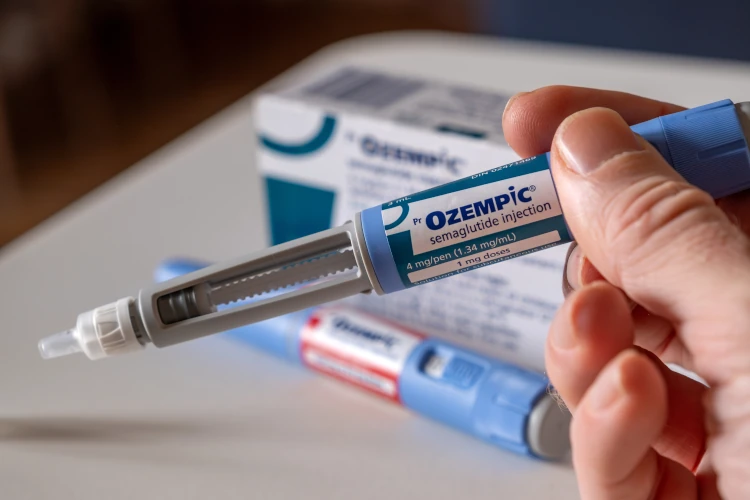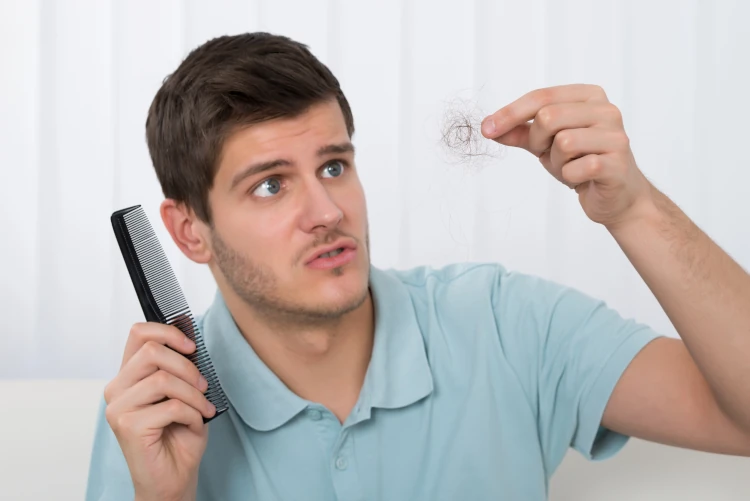
Hair Loss on Ozempic: Temporary Side Effect or Long-Term Issue?
More Ozempic users are reporting unexpected hair thinning and shedding as a concerning side effect of the medication. What started as excitement about weight loss results has turned into worry about losing hair along with pounds. This growing concern has left many wondering if their hair will return to normal.
Ozempic is a prescription drug initially developed to treat Type 2 diabetes. It has since become popular for weight loss because it emulates the hormones responsible for regulating blood sugar and slowing digestion.
There is no evidence that semaglutide directly damages hair follicles. Reported hair loss in some users is more likely due to telogen effluvium triggered by rapid weight loss, nutritional deficiencies, or stress, rather than a pharmacologic effect of Ozempic itself.
A sudden drop in body weight can cause temporary hair loss (telogen effluvium). This type of shedding typically resolves within 6–9 months once the body stabilizes. Permanent hair loss is rare unless another condition (e.g., androgenetic alopecia) is unmasked.
Why Does Hair Loss With Ozempic Happen?
Rapid weight loss resulting from Ozempic can cause your body to undergo significant stress that disrupts normal hair growth cycles. This abrupt shift causes hair follicles to enter a resting phase, resulting in increased shedding after several weeks or months. The dramatic metabolic change overwhelms your body’s ability to maintain normal functions.
Hormonal changes also trigger hair loss during Ozempic treatment. Weight loss can influence hormone levels, particularly impacting thyroid function and estrogen balance, both necessary for healthy hair growth. These hormonal shifts weaken follicles and reduce nutrient delivery to your scalp. Women face higher risks due to their greater sensitivity to hormonal fluctuations.
Nutritional deficiencies develop when Ozempic suppresses your appetite too dramatically. Hair follicles rely on consistent nutrients such as iron, zinc, biotin, and protein to stay healthy. When you eat significantly less, your body prioritizes vital organs over hair growth. This nutritional deficit sets the stage for widespread hair thinning.
Your follicles react intensely to internal stress and changes in the body’s metabolic balance. Certain medications, such as beta-blockers and SSRIs, have been anecdotally associated with hair shedding. However, combining these with Ozempic does not inherently “compound” hair loss risk unless they trigger independent telogen effluvium. Hair loss due to these medications is especially prominent in women. The process, called telogen effluvium, creates noticeable thinning across the scalp.
Using Ozempic for diabetes management adds extra metabolic stress beyond the typical weight loss effects. The combination of blood sugar fluctuations and rapid weight changes creates a double burden on your hair follicles. The more extreme your weight loss, the more severe your hair shedding may become.
Is Hair Loss on Ozempic Temporary or Permanent?
Hair shedding follows typical phases during the natural hair growth cycle, with most Ozempic-related hair loss classified as temporary. This condition mirrors telogen effluvium, a temporary hair loss condition where physical or emotional stress pushes hair follicles into a premature resting phase. During telogen effluvium, hair stops growing and eventually falls out, but the follicles remain healthy and capable of producing new hair.
Understanding the progression of hair thinning patterns helps predict when regrowth is likely. The early signs of hair loss vary depending on the type of alopecia and often differ between men and women. This type of hair loss is typically sudden and may be triggered by stress, illness, hormonal changes, or nutritional deficiencies. Some forms are temporary and resolve without treatment, but others may require medication or lifestyle changes.
Ozempic-induced hair loss is usually temporary and can be reversed with lifestyle changes. Your hair follicles remain intact during this process, meaning they can resume normal growth once triggering conditions improve. The key lies in addressing nutritional deficiencies, managing stress levels, and allowing your body time to adjust to metabolic changes. Taking early action to support nutritional and hormonal health may help mitigate shedding, though individual outcomes vary.
Signs and Symptoms of Ozempic Hair Loss

Early warning signs of Ozempic-related hair loss typically appear gradually and may be easy to dismiss initially. Recognizing these symptoms early helps you proactively protect your hair health.
Here are the key signs to watch for:
- Excessive shedding during brushing: During daily grooming routines, more hair is collected in your brush or comb than usual, which becomes one of the first noticeable symptoms.
- Thinning at the crown: Increased scalp visibility and wider part lines that become more apparent under bright lighting signal progressive hair loss.
- Changes in hair texture: Throughout your treatment period, your hair may feel thinner, more brittle, or lack its usual volume and shine.
- Increased daily hair loss: More hair found on pillows, shower drains, or clothing throughout the day indicates accelerated shedding.
Monitoring your hair health is important when starting Ozempic treatment. Here are essential tips for tracking changes:
- Document your baseline: Take photos of your hairline and crown area before beginning treatment for future comparison purposes.
- Keep track of shedding patterns: To spot trends, record any notable increases in daily hair loss that occur during brushing and washing sessions.
- Schedule regular check-ins: Discuss any changes with your healthcare provider so that your treatment plan can be adjusted accordingly.
- Monitor styling changes: Pay attention to reduced volume or difficulty maintaining your usual hairstyles as early indicators.
These monitoring strategies help you catch hair loss early and take preventive action before significant thinning occurs.
Treatment Options for Hair Loss Due to Ozempic
Several effective treatments can help restore hair health during and after Ozempic use. Early intervention often produces the best outcomes for patients experiencing medication-related hair loss.
- Platelet-rich plasma (PRP) therapy involves extracting and concentrating platelets from your blood to stimulate hair growth through natural biological processes. In the treatment, a blood sample is drawn, processed in a centrifuge, and injected into the scalp to deliver essential nutrients to weakened hair follicles.
- Nutritional support addresses deficiencies caused by Ozempic’s appetite-suppressing effects. Hair follicles require adequate protein, iron, zinc, and biotin to maintain healthy growth cycles. Targeted supplements and dietary modifications can restore the nutrients your hair needs to recover.
- Low-level laser therapy provides a non-invasive option for encouraging hair regrowth. This treatment uses specific light wavelengths to energize follicles and improve scalp circulation. Regular treatments can boost hair strength and help new strands grow where thinning has occurred.
For individuals with extensive hair loss, hair transplant procedures deliver permanent solutions when other treatments prove insufficient. Modern techniques achieve natural-looking results tailored to each patient’s specific needs. Before and after transformations show dramatic improvements possible through surgical restoration methods.
Patients considering hair restoration can review transparent pricing structures to plan their treatment journey effectively. Understanding all associated costs helps you make informed decisions about your hair restoration options.
What Are the Preventative Steps to Protect Hair Health While Using Ozempic?
Adopting proactive strategies can help mitigate the risk of hair loss while using Ozempic. Regular check-ups with your healthcare provider help monitor your nutritional status through blood tests that identify deficiencies in iron, zinc, vitamin D, and B before they impact your hair follicles.
Stress management while taking Ozempic requires attention since medication adjustments can increase cortisol levels that disrupt regular hair growth cycles. Supplementing key nutrients like biotin, iron, protein, and omega-3 fatty acids helps counteract the reduced food intake often accompanying Ozempic use.
Building a supportive health plan means coordinating care between your prescribing physician, nutritionist, and dermatologist when necessary. This collaborative approach helps mitigate long-term risks of hair loss associated with Ozempic while ensuring you receive maximum benefits from your diabetes or weight management treatment. Regular monitoring allows for adjustments to your prevention strategy as your body adapts to the medication.


